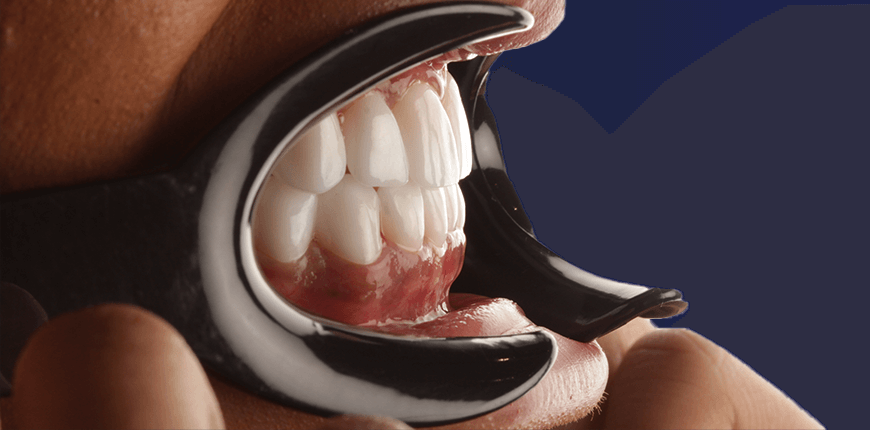
Dental Veneers
Dental veneers are a dental treatment method that can be a solution to aesthetic or functional problems of the tooth such as caries, fractures, cracks, and discoloration.
Veneers are placed on the front surface of the teeth, restoring the appearance and functionality of the tooth. This treatment can be done using a variety of materials. The most commonly used materials are ceramic, porcelain laminate, and composite. Ceramic and porcelain veneers are the veneer materials that most closely resemble natural teeth and are long-lasting.
Before the application of the dental veneers, the teeth should be cleaned and the tooth structure should be examined. After this examination, the dentist will determine the steps needed to determine the appropriate veneer material and prepare the tooth properly.
In the application phase, first of all, the preparation of the tooth is done. The harmful materials on the tooth are removed, the necessary measurements are taken, and the coating material prepared in a special laboratory environment for tooth coating is placed on the tooth.
Dental veneers perform many functions, such as straightening teeth, correcting discoloration, repairing fractures or cracks, and increasing the length of teeth.
What are the Types of Dental Veneers?
Dental veneers are divided into different types based on factors such as material, durability, and cost. The most common types of dental veneers are:
- The porcelain veneer applied to the visible surface of the tooth provides a harmonious appearance with the tooth's color and texture. This coating offers a long-term solution as it is a durable material.
- Empress veneers are made of a ceramic material that provides light transmission to the tooth. Therefore, they help the teeth reflect the natural light reflection.
- Zirconium veneers are used for discoloration of the tooth or in cracks. These coatings are popular because they are durable and aesthetically appealing.
- Composite veneers are used to complement damaged parts of the tooth or to improve the appearance of the tooth. These coatings are quick and easy to apply, but are less durable and require regular maintenance.
- Zirconium-backed porcelain veneers are popular because they are durable and aesthetically appealing. These veneers combine the strong structure of zirconium with the natural appearance of porcelain.
Who Can Be A Good Candidate for Dental Veneer?
 Dental veneer is a thin layer of porcelain adhered to the front surface of the teeth and is used to increase the aesthetic appearance of the teeth. They can be applied in the following cases:
Dental veneer is a thin layer of porcelain adhered to the front surface of the teeth and is used to increase the aesthetic appearance of the teeth. They can be applied in the following cases:
- Stains or color changes on the teeth can be removed with a dental veneer. Especially smoking, and consumption of colored drinks such as coffee and tea can cause teeth to turn yellow over time.
- Deformations such as fractures, cracks, or abrasions in the teeth can be corrected with dental veneers.
- Gaps between teeth can be closed with veneers.
- The shape and size of the teeth may not be suitable for the person's face and mouth structure. They can individually reshape the shape and size of teeth.
- Wearing the teeth can cause the teeth to break or cause sensitivity. In this case, the durability and aesthetics of the teeth can be regained with the application of laminate veneer.
Good candidates for dental veneer application should be free from oral health problems such as gum disease or tooth decay. A comprehensive consultation with the dentist is carried out before planning the treatment.
How is Dental Veneer Treatment Applied?
Dental veneer treatment is carried out in the dentistry clinic. Treatment is usually completed in a few visits and includes the following steps:
- In the first stage, the dentist examines the patient's teeth and sees whether it is suitable for veneer application. If necessary, they can perform a more detailed examination by taking X-rays. How the treatment will be administered and the person's expectations are evaluated together.
- The dentist wears the patient's teeth a little to make room for the teeth to be coated. This abrasion process involves removing the thinnest layer (approximately 0.5 mm) on the teeth. Here, measurements are also taken to determine the color tone of the teeth.
- After the preparation is complete, the dentist may apply temporary veneers. These are designed to protect the sensitive parts of the teeth. Temporary overlays will be removed when the veneers are ready.
- When the veneers are ready, the dentist places the veneers in place. This process first begins with cleaning the surface of the teeth with a special adhesive. Veneers are then placed on the patient's teeth. It hardens with the help of a special light.
- After the application, the adhesive residues on the teeth are cleaned and the teeth are polished. If necessary, the dentist touches the teeth to shape them in accordance with their natural appearance, and the treatment is completed.
Differences Between Crowns and Veneers
One of the most frequently used methods in dental treatments is crowns and veneers. Both are methods used to strengthen, shape, and improve the aesthetic appearance of teeth. However, there are some differences between them.
Crowns are structures that cover the entire tooth and are made of a different material than the natural structure of the tooth. They are generally used in cases where the teeth are broken, cracked, or damaged too much. They can also be used on dental implants.
Veneers, on the other hand, are structures that cover only the front part of the tooth and are made of a material similar to the natural structure of the tooth, such as laminate. They are used to correct the shape, color, and size of teeth. In addition, they can be used to close the stains, cracks, or gaps between the teeth on the front surface.
Another difference between crowns and veneers is their application time. Crowns require a longer process and preparation is required to cover the entire tooth, while veneers can complete the treatment in a shorter time. Of course, the planning made by the dentist can be decisive on the times.
-
Are Dental Veneers expensive?
The price of dental veneers may vary depending on material selection, dentist's experience, application area, and country.
-
Is the application of Dental Veneers painful?
The application of dental veneers is mostly painless. However, some patients may experience mild discomfort or tenderness during application.
-
How long do dental veneers last?
Dental veneers can last 10 to 15 years or more, depending on their materials and patient care. Following the instructions given by the dentist may extend the period of use.










